Toshiba Satellite L650-10G Review
Toshiba Satellite L650-10G
This mid-range 15.6in laptop is powered by a brisk Intel Core i5 processor and has a 500GB hard drive.
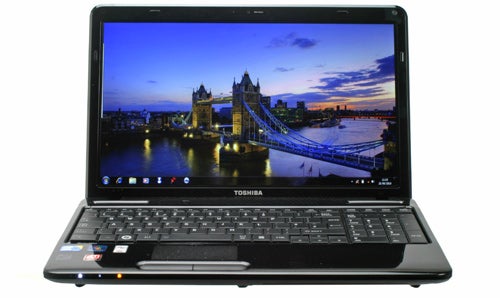
Verdict
Pros
- Good build quality
- Decent screen
- Good CPU performance
Cons
- Glossy plastics throughout
- Non-Gigabit Ethernet
- Weak dedicated graphics
- Average keyboard
Key Specifications
- Review Price: £629.00
- Dual-core Intel Core i5 CPU
- AMD Mobility Radeon 5145 graphics
- 4GB RAM, 500GB HDD
- 15.6in, 1,366 x 768 screen
Without doubt the L650 has the hardware for the job. Its Intel Core i5 processor, whose two cores run at 2.26GHz, should provide ample performance for most users, as will the included 4GB of RAM. A 500GB hard drive is capacious, too, though the choice of an ATI Mobility Radeon 5145 graphics card (a low/mid-range chip) is unlikely to offer too many opportunities for gaming.
There are one or two other disappointments in the spec, too, such as the lack of Bluetooth and the use of the slower 10/100 Fast Ethernet standard. In the latter case you do get Wireless-N Wi-Fi to compensate, but Gigabit Ethernet is so cheap it seems stingy not to include it. We also take umbrage with Toshiba’s standard warranty, which is a one-year carry-in policy as opposed to the collect & return services offered by most manufacturers. This means you’re responsible for sending your laptop to Toshiba in result of failure, and all the liabilities that entails.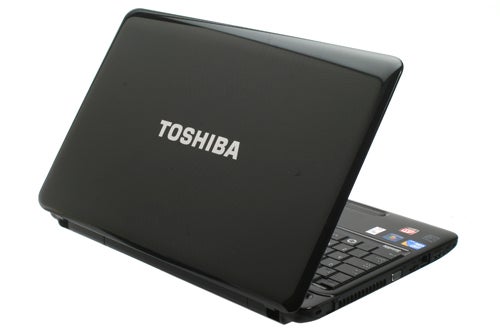
Toshiba is typically fairly conservative in its laptop design, and the L650 continues its fondness for the dreaded glossy black plastic. It’s better handled than in the past, though, featuring an attractive imprinted pattern that extends across the lid and body of the machine. Most importantly the keyboard, unlike previous Toshiba laptops, retains a matt finish that doesn’t result in greasy fingerprints or reflections. There’s nothing special in the L650’s design, but it has curves in all the right places and is generally well co-ordinated.
Toshiba’s famed build quality is also in evidence here. There’s nary a hint of poorly fitted panels anywhere in the machine, while the plastics used throughout are of an exceedingly high quality. There’s a sturdy quality to the L650 we rarely see in laptops at this price.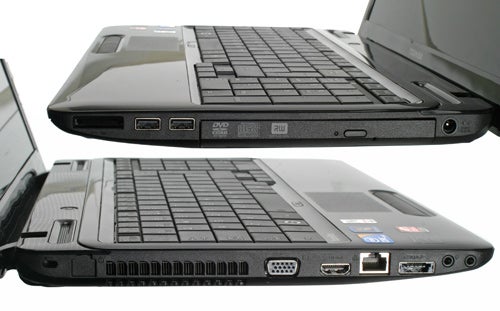
It also features a decent set of connections. Highlights include HDMI and a USB/eSATA combo port, which are joined by VGA, two standard USB ports, Ethernet, two audio jacks (1x headphone, 1x microphone), and a memory card reader that supports up to 64GB SD cards. There’s a standard, tray-loading 8x DVD-Rewriter drive on the right edge, and a 0.3-megapixel webcam with integrated microphone above the screen.
Despite the outstanding build quality present in the chassis, the keyboard on the L650 gives reason for pause. It has a good layout, though the off-centre alignment created by the – admittedly useful – number pad takes a little getting used to, but it just doesn’t feel right. Some minor flex doesn’t help matters, but it’s really the light, shallow key actions that are to blame. It’s far from a bad keyboard, but we’ve used better.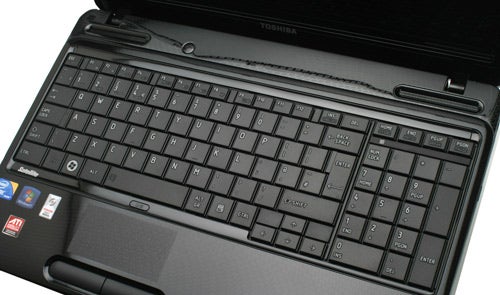
Things couldn’t more different with the touchpad. It seems somewhat incongruous to praise its buttons so highly, but the large, chunky ones on the L650 are quite a departure from the flimsy ‘rocker’ buttons we’ve become accustomed to of late. As for the pad itself, it’s nicely differentiated from its surroundings by a lightly textured surface, and supports all the usual multi-touch gestures.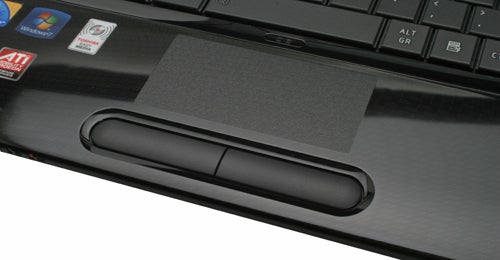
Like the majority of similarly priced laptops, the 15.6in screen on the L650 has a 1,366 x 768 native resolution. Purists might deem this a bit low, but if you want more then – by and large – you have to pay for privilege. In any case, it’s still a good resolution for HD video content and offers enough horizontal pixels to fit documents side-by-side.
It’s an above average display for the price, too. Viewing angles are reasonably good, and though colours don’t jump out at you, the screen resolves more detail in videos than many. Only the reflective finish puts a damper on things, particularly as it’s exacerbated by the equally reflective bezel.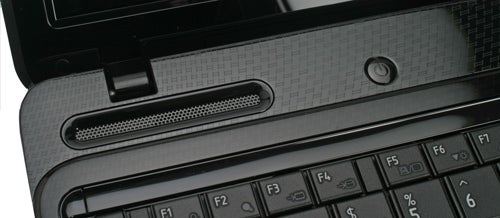
Toshiba has fostered an excellent reputation for audio on its laptops, but clearly the L650 has been deemed too cheap to continue it. Its stereo speakers do an adequate job, but are characterised by the kind of high-frequency bias that makes you wince at high volume. Try very hard you might make out some bass, or failing that you can create your own by acquiring some beatboxing skills.
As we discussed when we reviewed the Acer Aspire 5553G, adding more cores isn’t always a recipe for great performance: a faster dual-core processor is often the best option. It’s an opinion proved by the L650.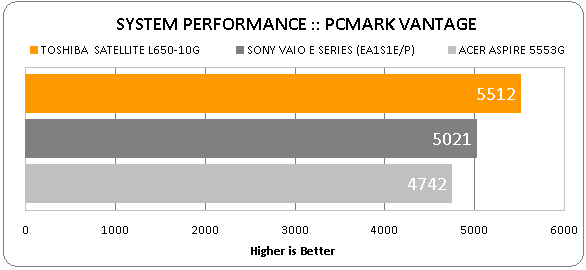
In our system performance testing it thoroughly stomps all over the Acer and its quad-core processor, while also outperforming the Intel Core i3-based Sony VAIO E Series by a reasonable margin. That said, the E Series still offers good performance for most users, and since our review has come down in price to a similar level to the Toshiba.
Indeed, when compared, the Sony makes a good argument for itself. Its screen may be smaller at 14-inches, but it has a higher 1,600 x 900 resolution and its size makes the machine more portable. Arguably the Sony has a more generous spec, too, including Bluetooth and Gigabit Ethernet – not to mention a better warranty.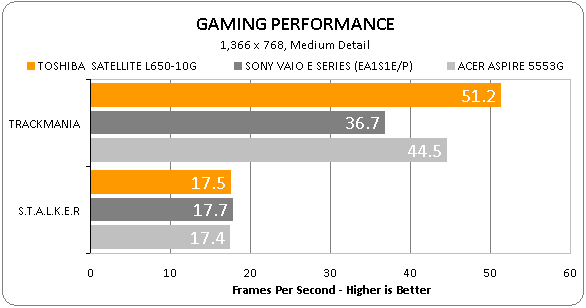
In games the L650 performs very similarly to both the Acer and the Sony, managing playable frame rates in our TrackMania Nations, but quickly falling foul of the more demanding STALKER: Call of Pripyat. Consequently this is the kind of laptop that can cope with casual, or retro, gaming titles, but can’t play more modern games adequately.
Battery life is rarely a major concern in laptops like this Toshiba, which at 2.46kg and 38cm across doesn’t lend itself to portability. Nonetheless, it’s always nice to not be tied to the mains power even when at home, and the L650 isn’t. 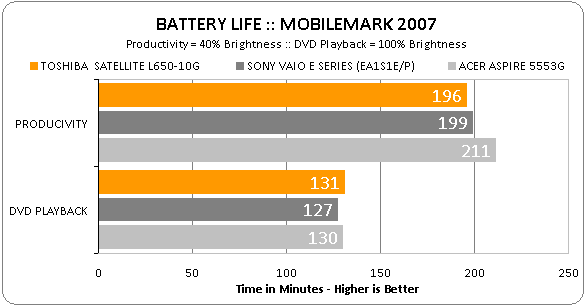
It lasted a decent 196 minutes (3hrs, 16mins) in our productivity test, though this is less than the Acer largely due to the latter’s graphics switching ability. DVD playback, which is tested at 100 per cent brightness, ran past the two hour barrier and could be extended by tweaking the settings to save power.
Verdict
This is another solid, well-made mainstream laptop from Toshiba, but a few niggles eat away at its value and attractiveness, and the standard carry-in warranty is disappointing. A few tweaks and this would be a very good laptop, but at present it’s just ‘good enough’.
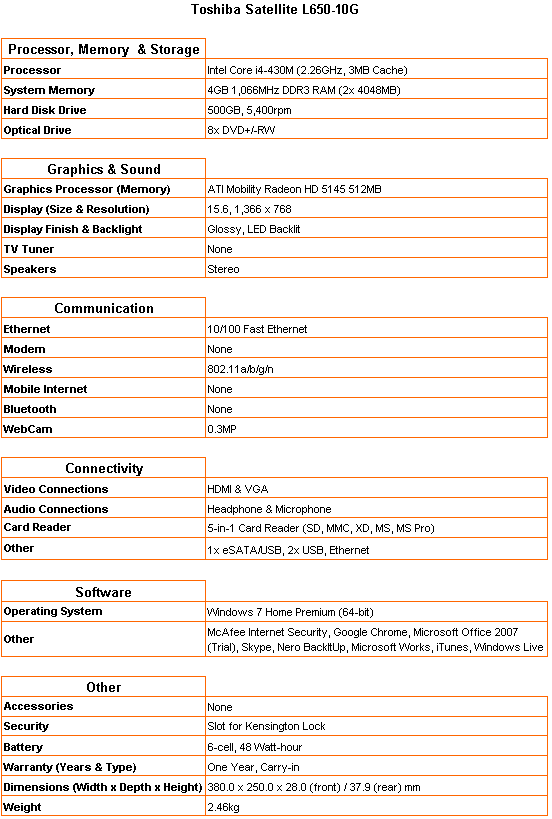
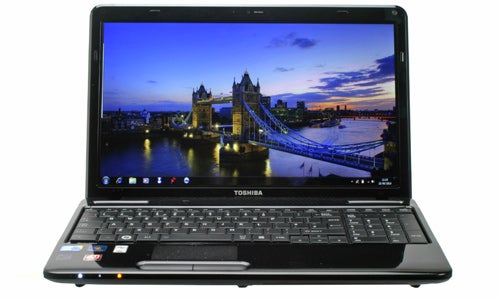
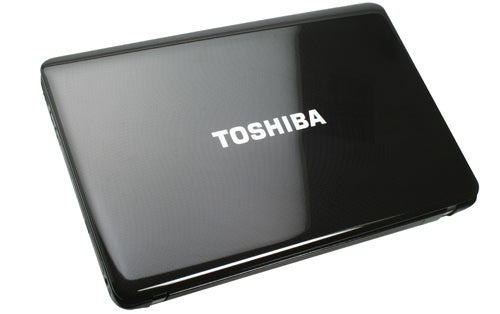
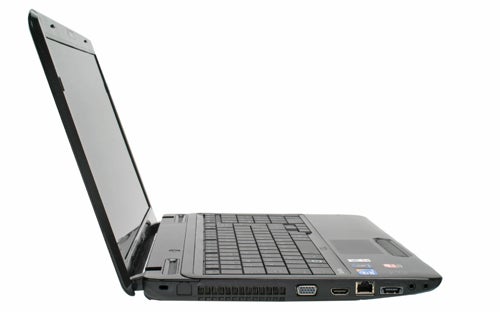
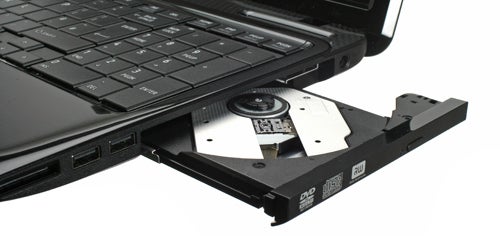
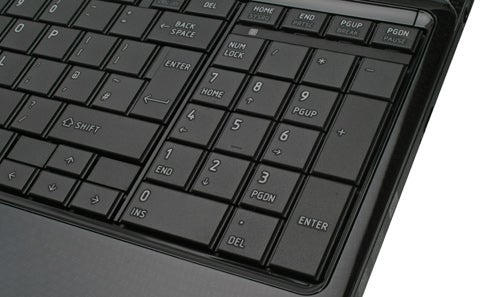
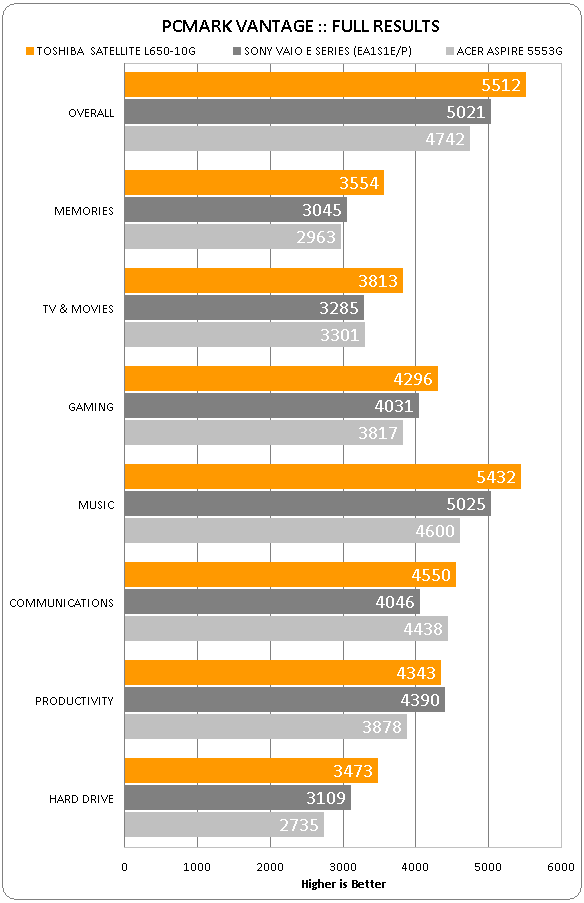
How we test laptops
Unlike other sites, we test every laptop we review thoroughly over an extended period of time. We use industry standard tests to compare features properly. We’ll always tell you what we find. We never, ever, accept money to review a product.
Trusted Score
Score in detail
-
Performance 8
-
Design 7
-
Value 7
-
Features 6
-
Battery Life 7

